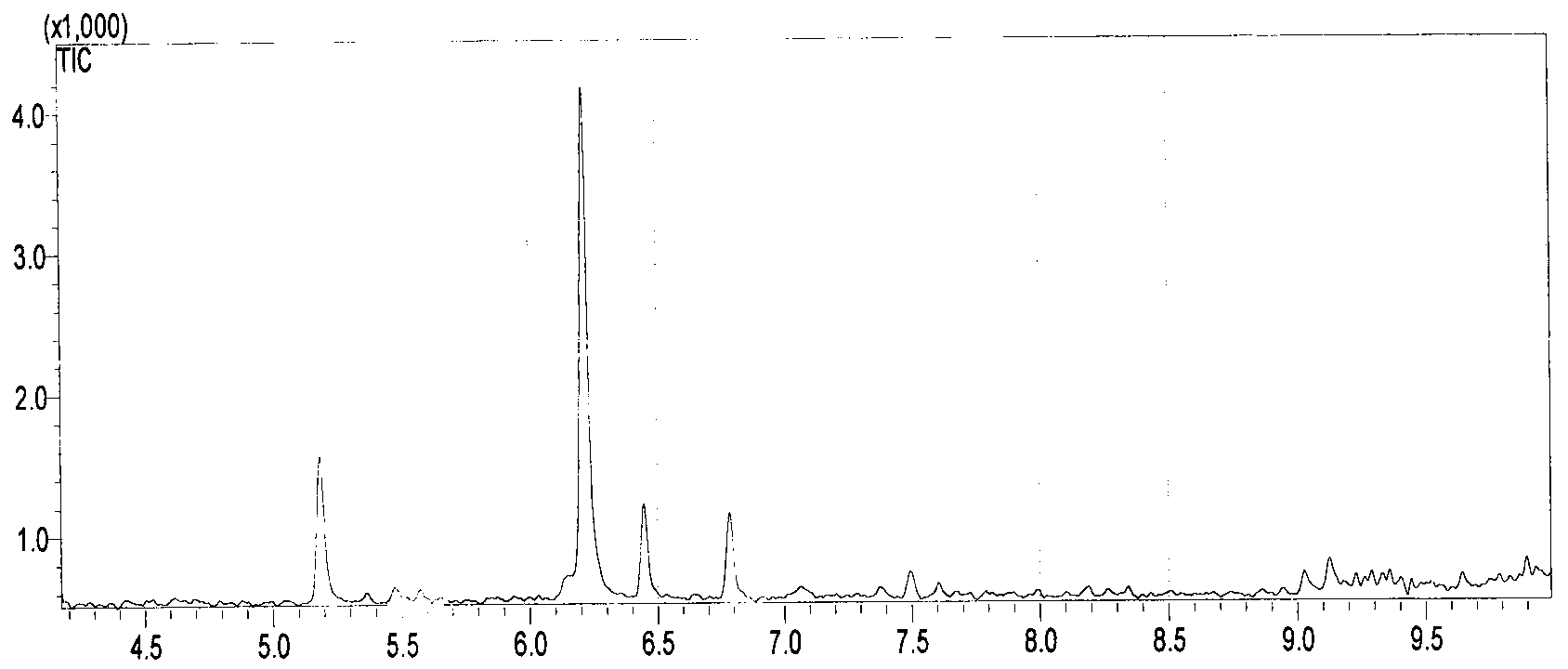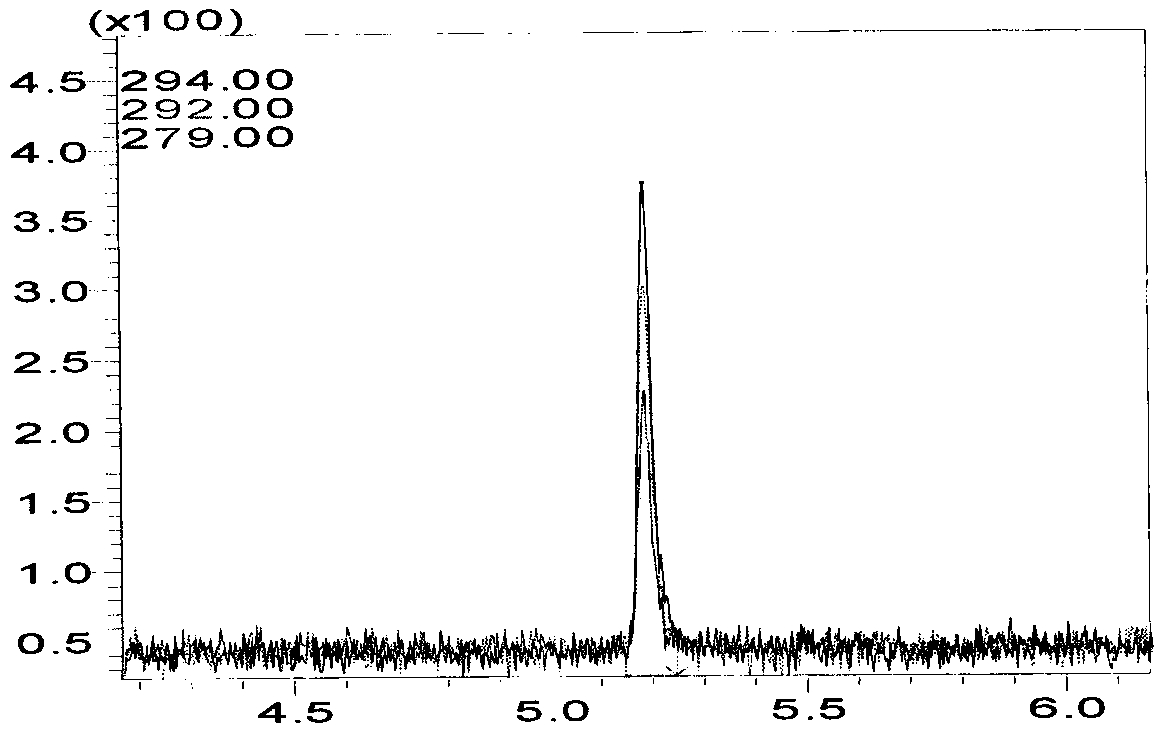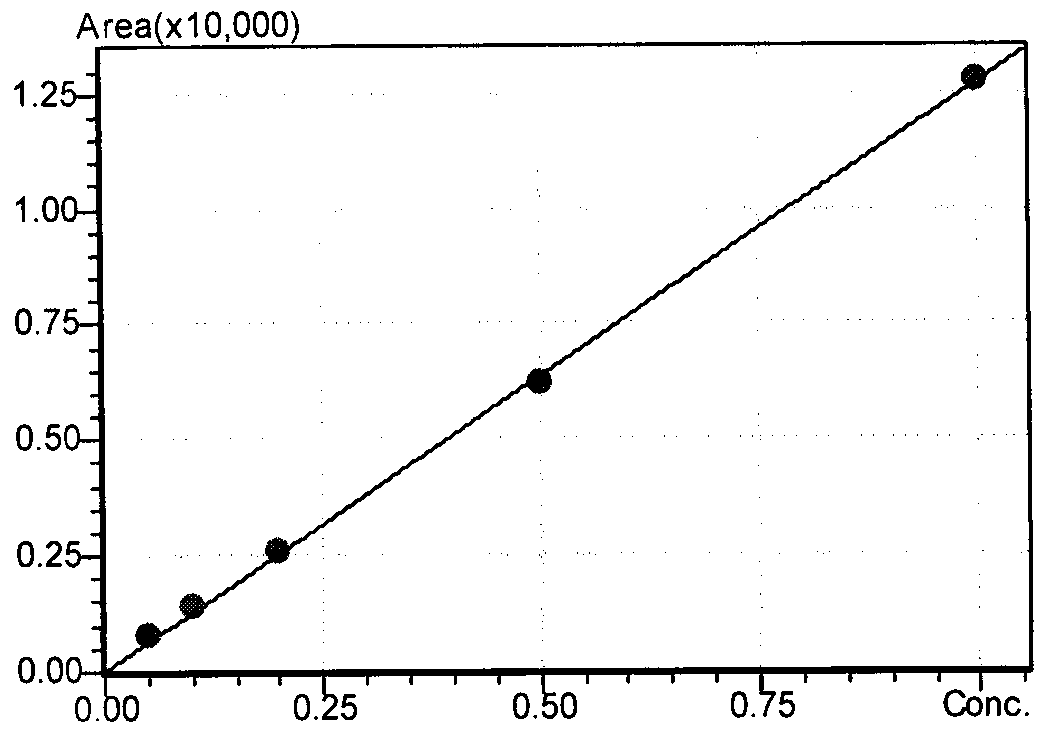Method of determining residual quantity of methylmercury in aquatic products
A determination method and technology of methylmercury, applied in the direction of measuring devices, instruments, scientific instruments, etc., to achieve the effects of stable derivative compounds, high extraction efficiency and high sensitivity
- Summary
- Abstract
- Description
- Claims
- Application Information
AI Technical Summary
Problems solved by technology
Method used
Image
Examples
Embodiment 1
[0023] Using toluene as a solvent, prepare methylmercury series standard solutions according to Table 1, carry out pretreatment according to the above experimental conditions, and perform analysis and detection by gas chromatography-mass spectrometry. figure 1 is the total ion flow chromatogram of the detected methylmercury, figure 2 is the corresponding selective ion flow diagram, the ordinate in the two figures represents the ion intensity, and the abscissa represents the retention time, by figure 1 It is known that the peak eluting time of the target is appropriate, and the retention time is 5.198min. The peak area is plotted against the concentration, and according to the three parallel measurement results of each standard point, the standard curve of methylmercury is established, such as image 3 As shown, the ordinate in the standard curve graph represents the corresponding value of the ion peak area, and the abscissa represents the concentration. see image 3 The ob...
Embodiment 2
[0027] Accurately weigh 1 g of the prepared sample into a 50 ml centrifuge tube, add 5 mL of 6 mol / L hydrochloric acid solution, and ultrasonically extract for 30 min. After the extract is cooled, add 10mL of 10% sodium chloride aqueous solution, vortex for 3min, add 5ml of toluene, centrifuge at 4000r / min for 5min, transfer the toluene layer, repeat the 5ml toluene extraction twice, combine the toluene layer three times and use 5mL, Back extract the toluene layer with 1% L-cysteine aqueous solution, transfer the extract to a 15ml centrifuge tube, add 1mL, 0.1% sulfuric acid solution to acidify (PH=3), 1ml saturated copper sulfate solution and 0.2mL, 0.1% four Derivatize with sodium phenyl borate solution, then add 1ml of n-hexane and shake for 30 minutes to extract, and analyze and detect with gas chromatography-mass spectrometry. Three parallel samples were made for this sample, and the test numbers were A, B, and C respectively. The analysis results are shown in Table 2, ...
Embodiment 3
[0033] The standard solution in the embodiment 1 is added in the aquatic product tissue treatment sample of the embodiment 2 at a fixed concentration, and the test is carried out according to the above-mentioned sample pretreatment process and instrument test conditions, and six additions are made to the sample, each The sample of standard-added content is repeatedly measured three times to get the average value, and according to the actual addition amount and the measured value, calculate the standard-added recovery rate of this sample, the experimental results are shown in Table 4, as can be seen from Table 4, the standard-added recovery rate of the sample is between 89.9%- 109% between.
[0034] Table 4 The recovery of standard addition of this sample
[0035] Amount added / ng 1 2 3 4 Actual measured average value / ng 50 100 200 500 Recovery rate,% 89.9 90.4 90.2 109
PUM
 Login to View More
Login to View More Abstract
Description
Claims
Application Information
 Login to View More
Login to View More - R&D
- Intellectual Property
- Life Sciences
- Materials
- Tech Scout
- Unparalleled Data Quality
- Higher Quality Content
- 60% Fewer Hallucinations
Browse by: Latest US Patents, China's latest patents, Technical Efficacy Thesaurus, Application Domain, Technology Topic, Popular Technical Reports.
© 2025 PatSnap. All rights reserved.Legal|Privacy policy|Modern Slavery Act Transparency Statement|Sitemap|About US| Contact US: help@patsnap.com



